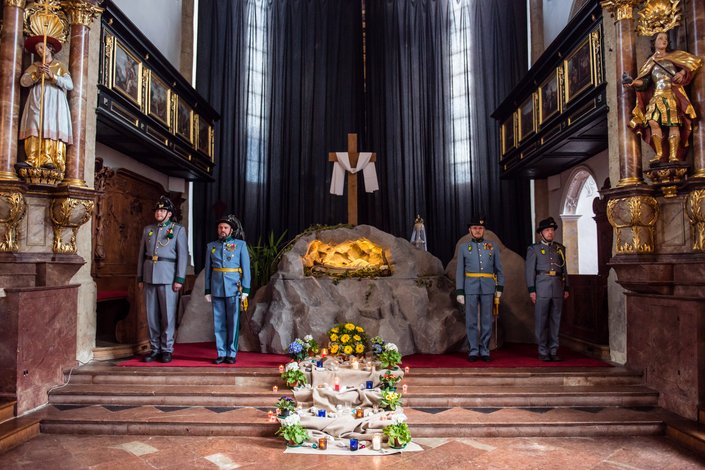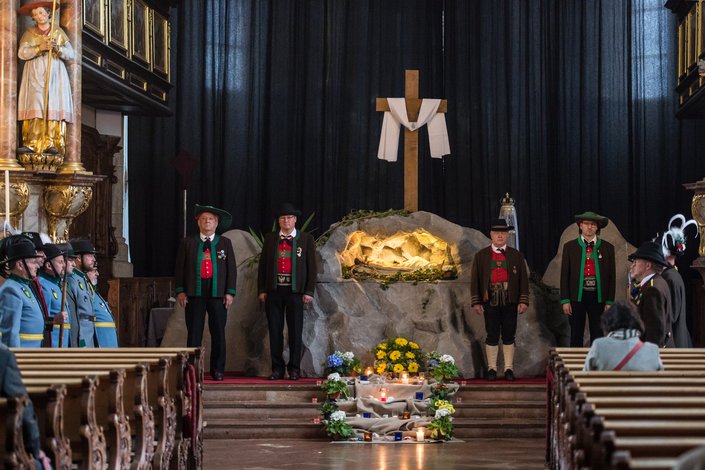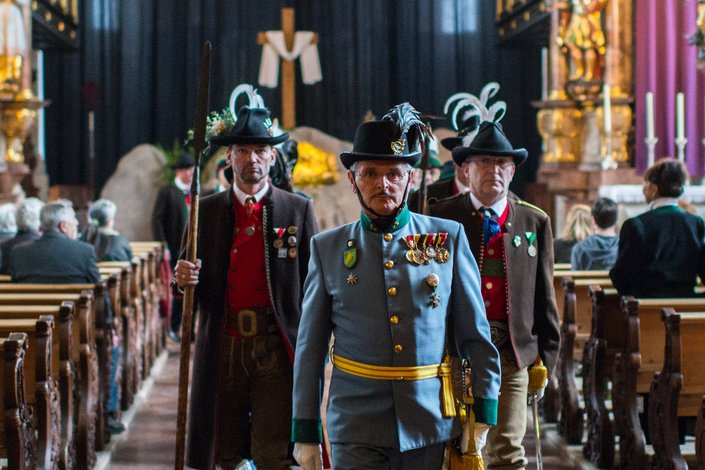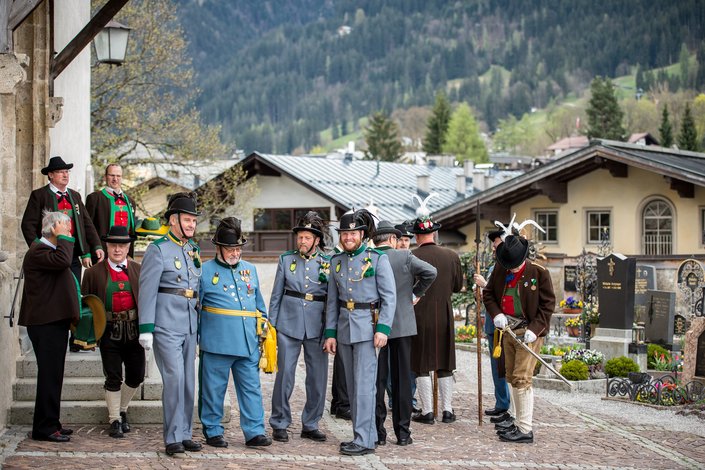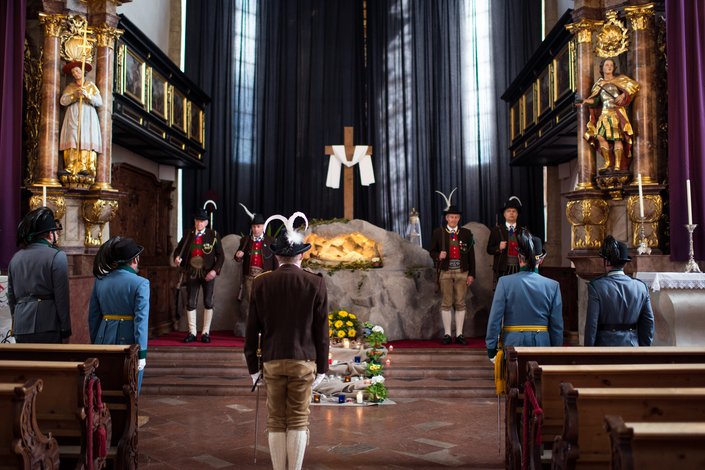The custom of the Kitzbühel Rifle Company
Until the 1970s, it was the custom of the Kitzbühel Rifle Company to hold the grave vigil in the parish church on Holy Saturday. For some years now, six local traditional societies have been meeting again to guard Jesus' body. In doing so, they slip into the role of the Romans - a custom that over the course of time has not only had friends and is now only very rarely lived.
Every year on Holy Saturday, the sanctuary of the Kitzbühel parish church is transformed into a stone landscape for a few hours. A large rock in the center, directly in front of the altar, symbolizes the tomb of Jesus Christ. Next to flowers and candles stand four men. Together with colleagues who will later relieve them, they complete the ancient custom of the tomb guard. "This comes from the Holy Scriptures," explains Leo Moser, chairman of the Kitzbühel Kaiserjäger. "After all, the Romans guarded the tomb after Jesus' death to prevent the body from being stolen by his disciples," adds Josef Profanter, chairman of the Association of South Tyroleans in Kitzbühel. In order to call this biblically professed situation also today in the consciousness of the population, members of six Kitzbühel tradition associations meet on Holy Saturday for the common grave guard.
"Originally, the marksmen did this until the grave guard was abolished in the 1970s by the priest at the time," Leo Moser recounts, "he no longer considered it to be in keeping with the times and didn't want anyone standing in the church with weapons." In fact, the marksmen kept watch not only in their historical uniforms, but also with their rifles at foot. "Today, however, no one bothers with that anymore," Leo Moser continues. Since 2010, when the grave guard was reintroduced on his initiative, the Kaiserjäger with saber or bayonet and the "Trachtler" with their lances also keep watch. "Only the South Tyroleans have exclusively the fist," jokes the retired policeman.
Six hours of living tradition
All in all, the Kaiserjäger, the Schützenkompanie, the Trachtenverein, the Verein der Südtiroler, the Gilde and the Kameradschaftsbund - all in their traditional costumes or uniforms - divide up the grave guard. From nine o'clock in the morning until 3 p.m., they take turns at half-hour intervals. "Standing very still and serious in the Habt Acht position for longer than 30 minutes is not so pleasant," Leo Moser describes. "Some of them are older men, and that can be a very long time," adds Josef Profanter.
Allegedly, there are also various methods to pass the time. Seconds, rows of benches or people are counted. Thanks to the latter, the pair know when the crowds are at their peak. "By now, word has spread a bit about what we do. That's why not only believers are in the church during our vigil, but also guests. From 12 o'clock on, there is already a bit more going on," Josef Profanter reports from the last few years. When all the associations march in at 2:30 p.m. for a final joint shift, the church was often well filled.
At 3 p.m. sharp, the guard steps down, the tomb is dismantled, and the church is prepared for the evening Easter Vigil celebration. Although Holy Saturday is actually a strict day of fasting, the members of the grave guard are allowed to reward themselves with substantial refreshments after their "service." "Of course, the serious vigil is not particularly fun. But afterwards it goes with the snack of the municipality again much more loosely and more amusingly", Josef Profanter is pleased. Many do not come on this day, however, to enjoy a pre-Easter snack, because the custom of the grave guard is lived almost only in the district of Kitzbühel. "St. Johann, Going, Schwaz and Kufstein also have their own graves. But some take only wooden figures as a symbol of guards and do not put people," reports the emperor hunter. Occasionally, grave guards are also found in Lower Austria and Salzburg.
Old custom - New grave
Although the tradition goes back many centuries, the Kitzbühel gravescape is relatively new by comparison. That's because when the vigil was reintroduced in 2010, there was a lack of a grave. "Originally, we stood at a small grave by the side altar, but the parish priest didn't like that because it was so hidden," Leo Moser recounts. Without further ado, pastor Michael Struzynski asked his sister to design a new grave that encircles the altar. "She is a stage designer at the Salzburg Landestheater, so she is a professional in this field. Two years later, we stood in the center for the first time with the large new gravescape," Leo Moser recounts proudly.

